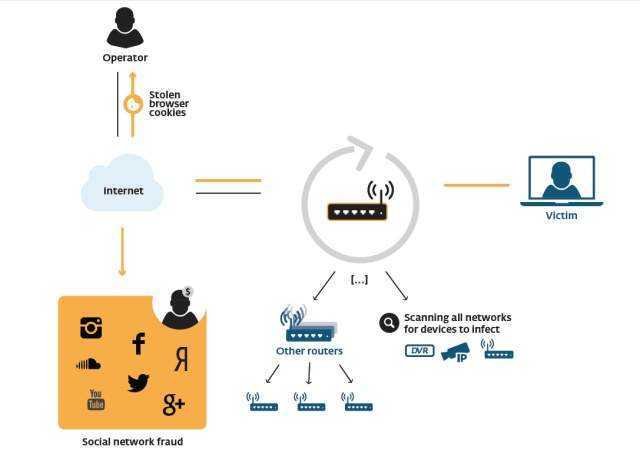New malware attack targets social media and is distributed through home router devices. Once infected, compromised devices are capable of stealing unencrypted network traffic data.
Once infected, compromised devices are ready to steal unencrypted network traffic data and offer proxy services to its operator botnet.
In practice, they are used to steal HTTP cookies in order to carry out fraud actions on Facebook, Twitter, Instagram, You Tube and other websites, which include thetreatment follows, views and likes.
- What is Moose malware?
The Linux / Moose είναι μία οικογένεια malware, η οποία σαν πρωταρχικό στόχο είχε τις οικιακές συσκευές router για καταναλωτές που στηρίζονται σε Linux, αλλά επίσης θεωρείται υπεύθυνη και για τη μόλυνση άλλων ενσωματωμένων συστημάτων που βασίζονται σε Linux. Επίσης εκ των άλλων, η απειλή φέρεται να έχει δυνατότητες για διείσδυση στο network, πέρα από τις συνηθισμένες συγκριτικά με άλλα malware που επιτίθενται σε συσκευές router.
According to ESET researchers, this type of malware also has the ability to reroute DNS traffic, which enables man-in-the-middle attacks on the Internet.
According to the statement of Olivier Bildand, ESET researcher:
"Given the rudimentary techniques Moose uses to gain access to other devices, it is unfortunate that the better safety των ενσωματωμένων συσκευών δεν φαίνεται να λαμβάνεται σοβαρά από τους κατασκευαστές δικτυακών προϊόντων. Ελπίζουμε ότι οι προσπάθειές μας θα βοηθήσουν τους καταναλωτές στο να κατανοήσουν τους τρόπους που οι κακόβουλοι παράγοντες επιτίθενται στις συσκευές τους».






